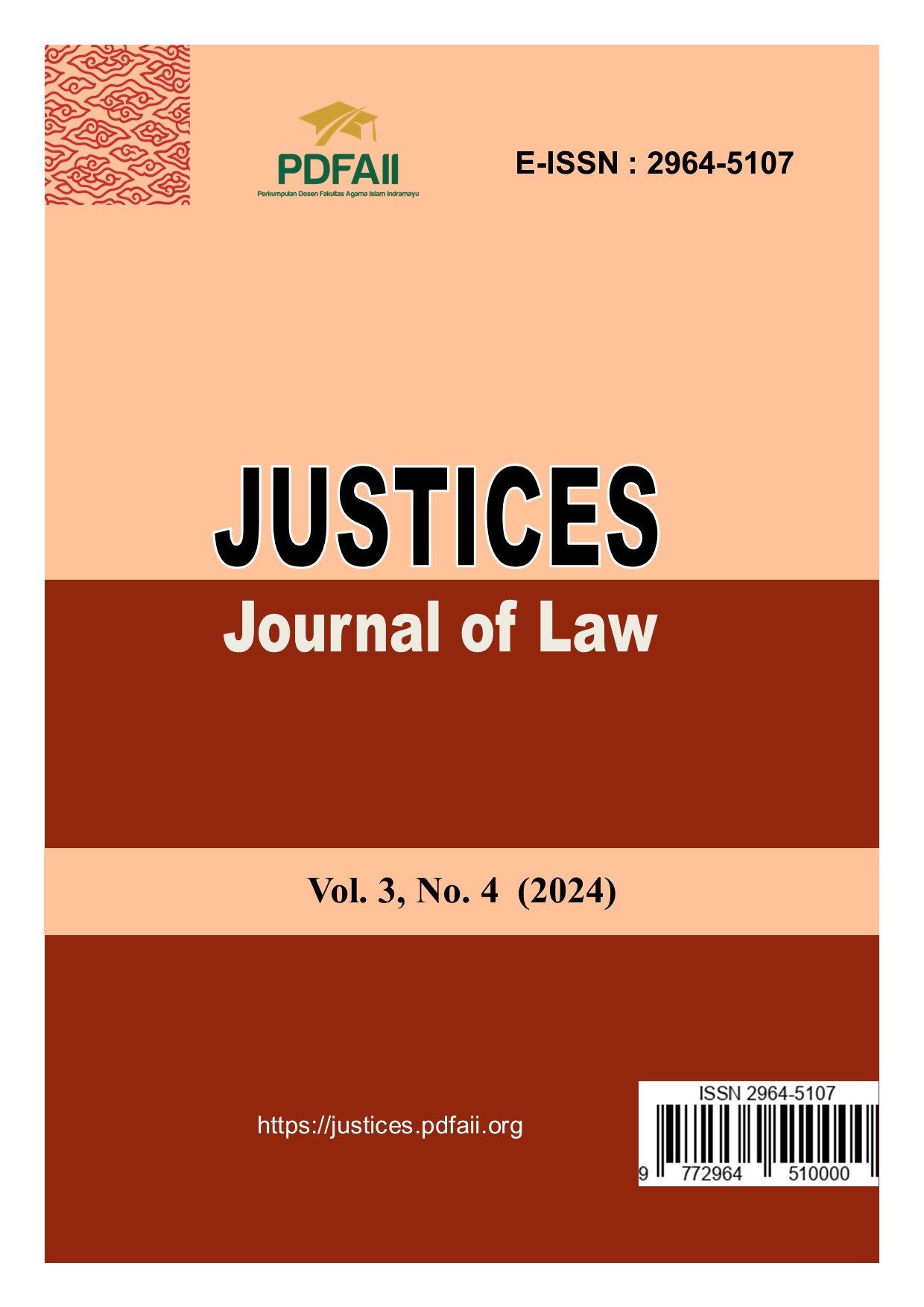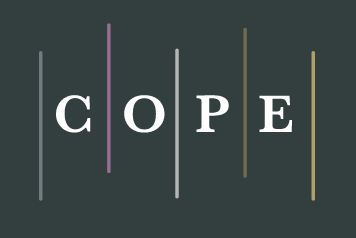Role of KVKs in Jammu & Kashmir under the Plant Protection Act 2001
DOI:
https://doi.org/10.58355/justices.v3i4.133Keywords:
KVK, PGSA, PPVFR, OFT, FLD plant varieties, Genome Savior, award, Krishi Vigyan, Kendra.Abstract
The Protection of Plant Varieties and Farmers Act,2001 is the culmination of legislative action undertaken by India to give effect to the TRIPS Agreement under the aegis of the WTO regime. This enactment is applicable in the whole of India including the state of J&K. Like in the rest of India the Ministry of Agriculture implements it through its nodal agencies known as Krishi Vigyan Kendras. This paper shall enumerate the Origin, Genesis, and mandate of Krishi Vigyan Kendras working under the aegis of the Ministry of Agriculture. It will define the role of KVKs and how farmers benefit from the schemes formulated therein. It shall illuminate the potential contribution of KVK in Kashmir Valley as an implementation machinery under the PPVFR Act 2001 and as an allied department of SKUAST-K. Needless to mention here KVKs play an important role in providing assistance and training to farmers in the shape of OFT [on-farm trials] and FLDs [front-line demonstrations] to enhance the quality of the farmer’s variety.
Downloads
References
Adhiguru P., P.S. Birthal and B. Ganesh Kumar (2009), Strengthening Pluralistic Agricultural Information Delivery Systems in India, Agricultural Economic Research Review, 22.
Asiwal, B.L., L.R. Balai, J. Akhter and R.C. Asiwal (2015), Role of KVK in enhancing the productivity and profitability of moong bean through FLDs in Sikar district of Rajasthan, Agriculture Update, 10 (3), pp. 221-25.
Bar, Narayan (2015), Impact of KVK in Transferring Knowledge to Tribal Farmers on Farm Activities, Global Journal of Science Frontier Research: D Agriculture and Veterinary, 15(3), p.29.
Behera, S. K., J. R. Maharana, P. Acharya (2014), Transfer of Technology through Krishi Vigyan Kendra for the Tribal Farmers in Hilly Areas of Koraput District, Indian Journal of Hill Farming, 27(2): 34-37.
Birner, R., and J.R. Anderson (2007), “How to make agricultural extension demand-driven? The case of India’s agricultural policy”, IFPRI Discussion Paper 00729, Washington, D.C.: International Food Policy Research Institute.
Birthal, P.S., S. Kumar, D.S. Negi, and D. Roy (2015), The impacts of information on returns from farming: evidence from a nationally representative survey in India. Agricultural Economics, 46: 549-61
Glendenning J. Claire, Suresh Babu and Kwadwo Asenso-Okyere (2010). Review of Agricultural Extension in India: Are Farmers‟ Information Needs Being Met? IFPRI Discussion Paper 01048, December/
Government of India, NITI Aayog (2015). Raising Agricultural Productivity and Making Farming Remunerative for Farmers – An Occasional Paper. 16 December.
Government of India, Ministry of Agriculture& Farmers Welfare (2015-16). State of Indian Agriculture. Directorate of Economics and Statistics.
IAMR (2015).KVKs‟ Impact on Dissemination of Improved Practices and Technologies – Evidence-based field study‟ Institute of Applied Manpower Research, New Delhi
ICAR, Agricultural Extension Division. Report of the High Power Committee on Management of Krishi Vigyan Kendra (KVK).
Kumbhare, N.V. , S.R. Khonde (2009). Impact of KVK Training on Farmers‟ Adoption Behaviour and Knowledge Gain, Indian Journal of Extension Education, 45(3 & 4), pp. 60-62
Maheswara Rao, D. Uma, G. Sridhar, (2014), Knowledge gained among the benefits such as Ambri apple, Red Rice, saffron, Kalazera, etc. KVK serves as a facilitator, playing a pivotal role in collaborative efforts under a participatory mode. Working in tandem with these units, we identify areas of intervention and provide crucial inputs and assistance for the successful implementation of revival programmes. One such revival program not only resulted in ensuring the preservation of valuable agricultural diversity but also helped in boosting of Mushkbudji variety of Rice at the national and International levels.
Krishi Vigyan Kendra through its technology transfer through Demonstrations compared to non-beneficiaries – A case study of Krishi Vigyan Kendra, Visakhapatnam district, 3(1), pp. 8870-86.
Menon J.Sreevalsan, Asha, and Siljo Johnson (2013), Effectiveness of training programmes of Krishi Vigyan Kendra (KVK)on mushroom cultivation, In. Journal of Recent Scientific Research.
NSSO (National Sample Survey Organization) (2003), 59th Round, Situation Assessment Survey of Farmers(Report No. 498 (59/33/1). New Delhi: Ministry of Statistics and Programme Implementation.
NSSO (2005), Situation assessment survey of farmers: Access to modern technology for farming, 59th round (January-December 2003), Report No. 499 (59/33/2). New Delhi: Ministry of Statistics and Programme Implementation.
OECD (2017). OECD Economic Surveys: India. February.
OECD/FAO (2016). OECD-FAO Agricultural Outlook 2016-2025. OECD Publishing, Paris.
Rao BVLN, Chapter: Indian Agriculture Scenario, in “Towards Skill Endowed Human Resources in Agriculture” (2014), edited by D. Rama Rao, BVLN Rao, Rashmi Agrawal.
Subburaj, V.K. (2013), Impact of KrishiVigyanKendras on the Beneficiaries in Tamil Nadu and Puducherry, Ph.D. thesis, Gandhi gram Rural Institute, Gandhi gram, Tamil Nadu
Sulaiman, R. and A. Hall (2002), Beyond technology dissemination: Can Indian agricultural extension re-invent itself? ICAR Policy Brief No. 16, New Delhi: Indian Council of Agricultural Research.
Sulaiman, R. and G. Holt (2002), Extension, poverty and vulnerability in India: Country study for the Neuchatel Initiative. Working Paper 154. London: Overseas Development Institute.
Sulaiman, R. and A.W. van den Ban (2003), Funding and delivering agricultural extension in India, Journal of International Agricultural and Extension Education, 10(1), pp. 21-30.
Sulaiman, R. (2003a), Agriculture extension: Involvement of private sector, Occasional Paper 29, Mumbai: Department of Economic Analysis and Research.
Sulaiman, R. (2003b), Innovations in agricultural extension in India, Rome: Food and Agriculture Organization of the United Nations, Sustainable Development Department.
Sulaiman, R. and A. Hall (2008), The fallacy of universal solutions in extension: Is ATMA the new T&V? www.innovationstudies. org/ index.php?option=com_myblog&show=TheFallacy-of-Universal-Solutions-in-Extension-139.html&Itemid.
Suresh, VK and Suresh A, Public Sector Agriculture Extension in India: A Note, Review of Agrarian Studies vol. 6, no. 1 January–June 2016)
Venkatesh P. and M.L. Nithyashree (2014).Institutional Changes in Delivery of Agricultural Inputs and Services to Farm Households in India. Agricultural Economics Research Review. Vol 2, pp. 85-92.
Downloads
Published
How to Cite
Issue
Section
License
Copyright (c) 2024 Nazia Fayaz Azad, Fareed Ahmed Rafiqi, Bilal Ahmad Bhat

This work is licensed under a Creative Commons Attribution 4.0 International License.
























